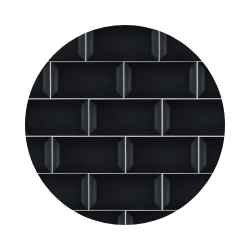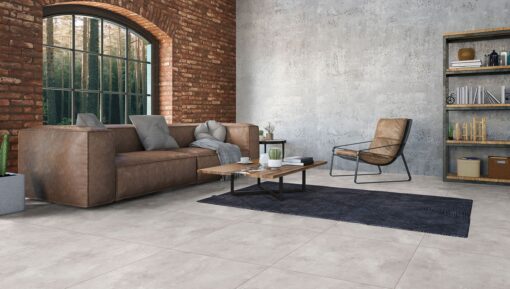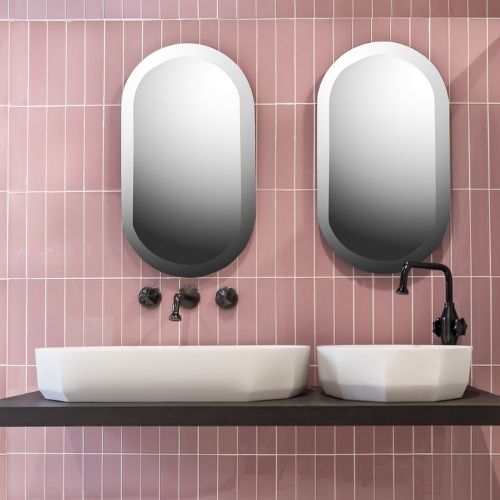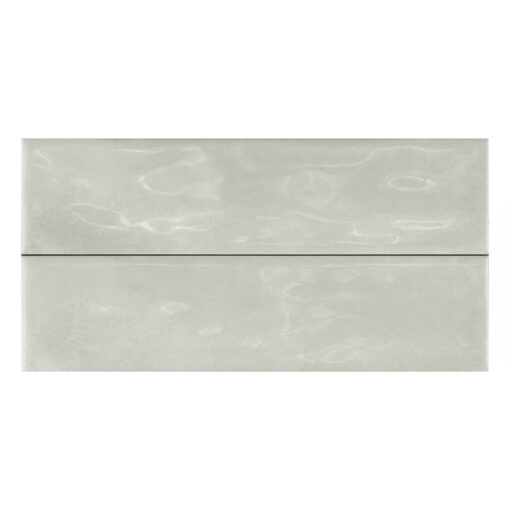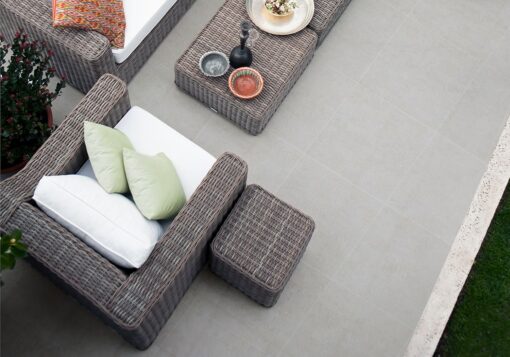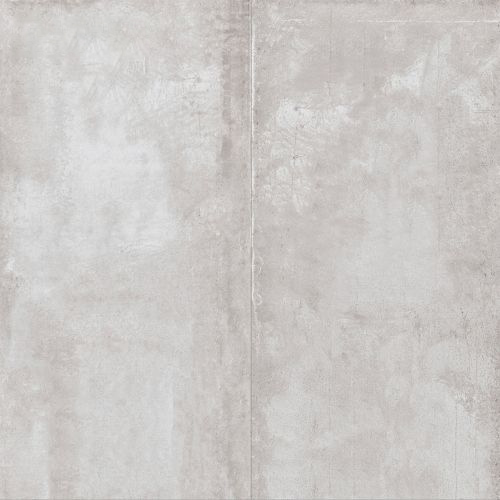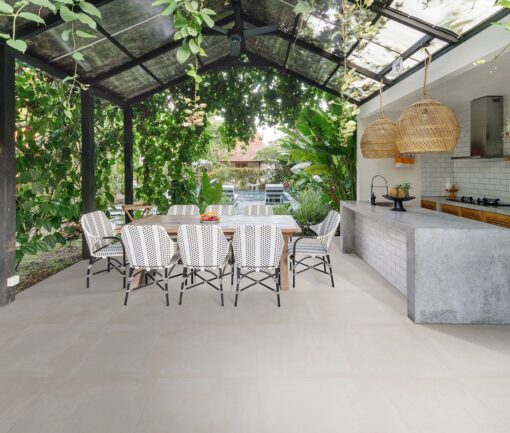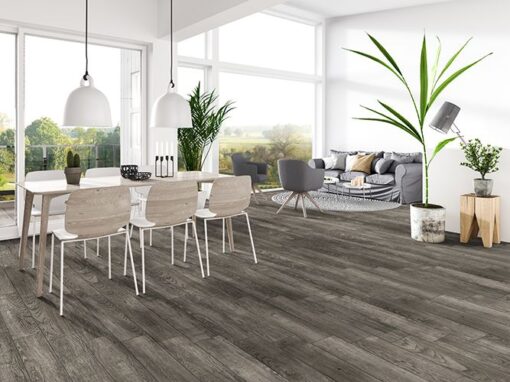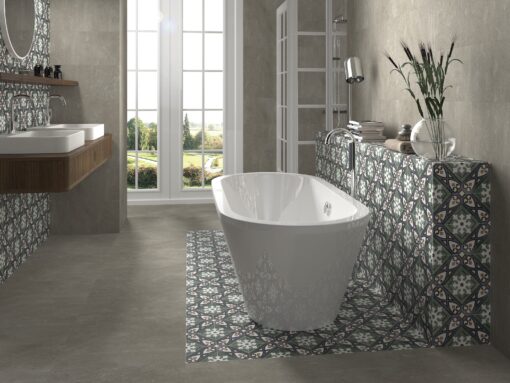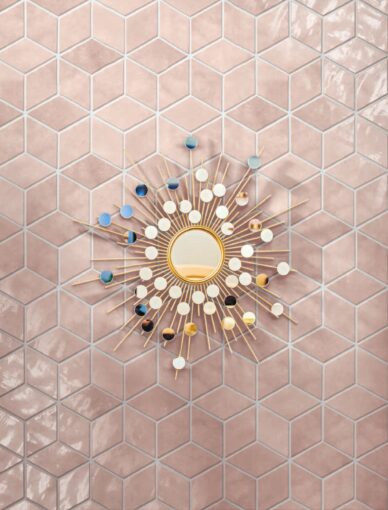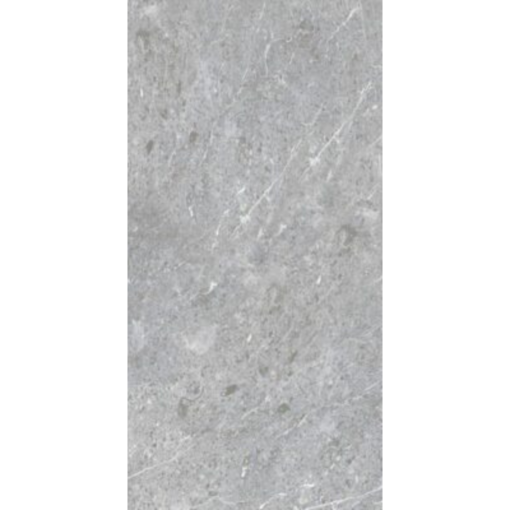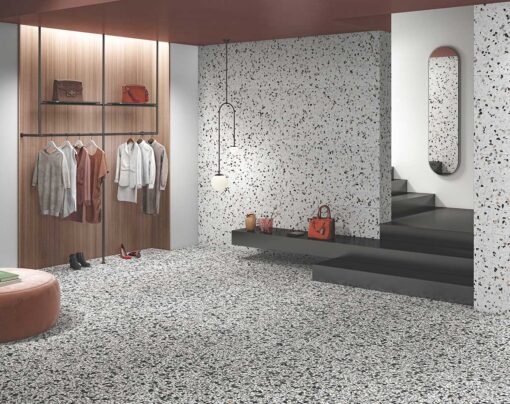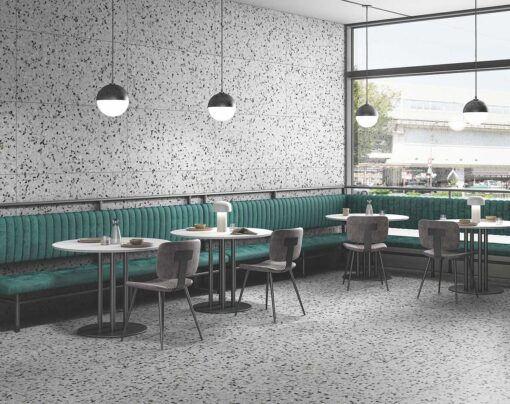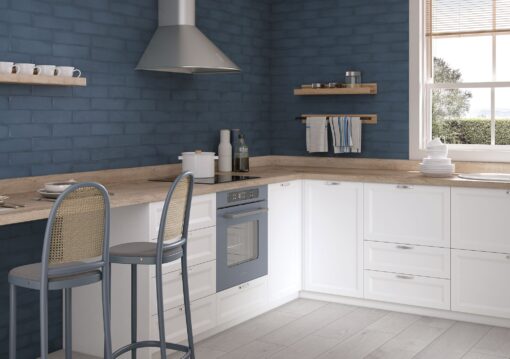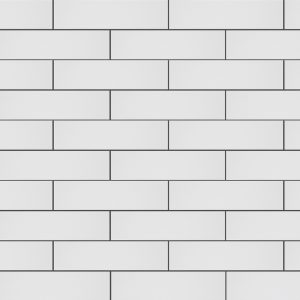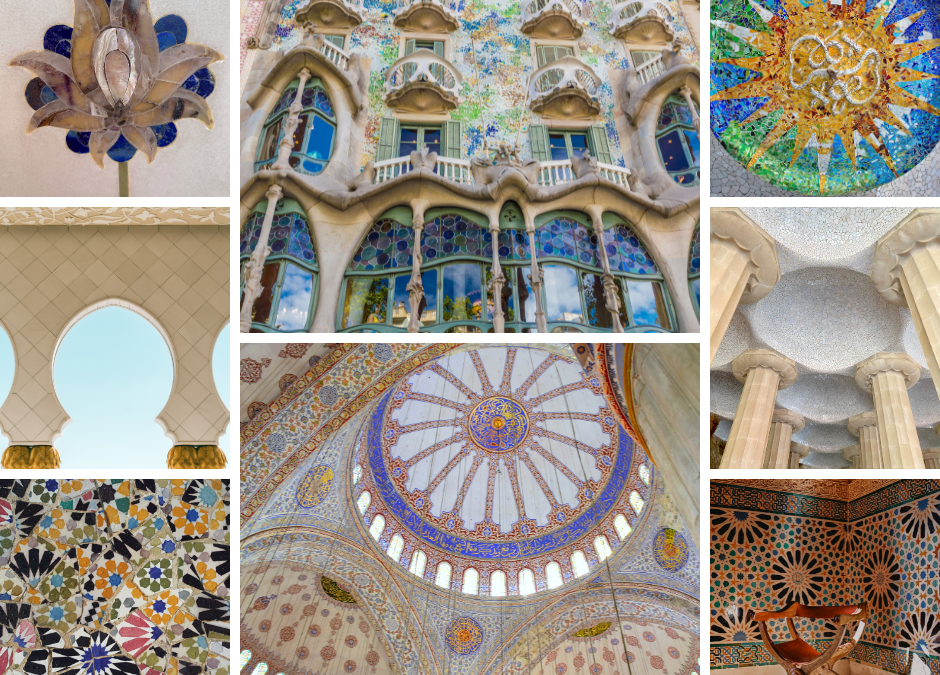
blog, commercial blog, floors, walls
Are you looking for inspiration for your next home renovation project?
Look no further than the world’s most beautiful tilework!
From intricate mosaics to stunning geometric designs, these top tiling projects from around the world will leave you awestruck. Whether you’re a DIY homeowner or an interior designer, these examples are sure to spark your creativity.
Alhambra Palace, Granada, Spain
The Alhambra Palace in Granada, Spain is a stunning example of Moorish architecture and design. The intricate tilework throughout the palace is a testament to the skill and craftsmanship of the artisans who created it. The use of vibrant colors and geometric patterns creates a sense of harmony and balance that is truly breathtaking.
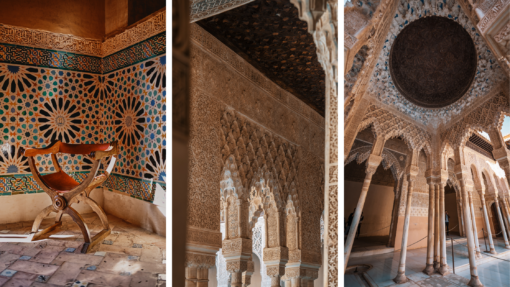
Alhambra Palace, Granada, Spain
Sheikh Zayed Grand Mosque, Abu Dhabi, UAE
The Sheikh Zayed Grand Mosque in Abu Dhabi is a modern masterpiece that combines traditional Islamic design with contemporary elements. The marble and tilework throughout the mosque is simply stunning, with intricate floral and geometric patterns that are both intricate and eye-catching.
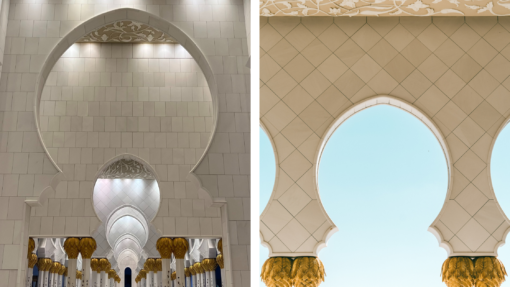
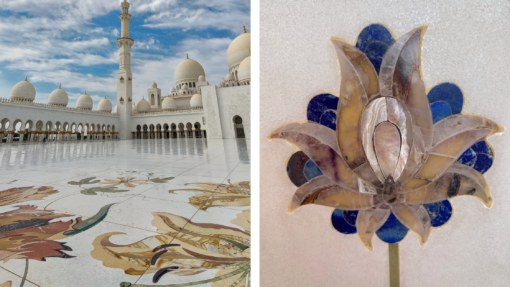
Sheikh Zayed Grand Mosque, Abu Dhabi, UAE
Park Guell, Barcelona, Spain
Park Guell in Barcelona, Spain is a whimsical wonderland of tilework created by the famous artist Antoni Gaudi. The park features an array of colorful mosaics, intricate patterns, and playful sculptures that are sure to delight visitors of all ages.
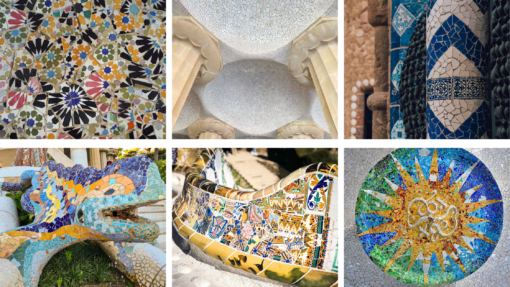
Park Guell, Barcelona, Spain
The Blue Mosque, Istanbul, Turkey
The Blue Mosque in Istanbul, Turkey is a stunning example of Islamic architecture and design. The mosque is famous for its beautiful blue tiles, which cover the walls and ceilings of the interior. The use of light and shadow creates a serene and peaceful atmosphere that is both calming and awe-inspiring.
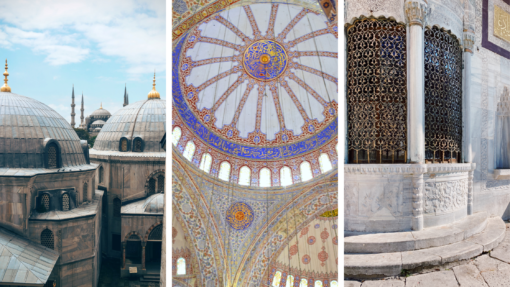
The Blue Mosque, Istanbul, Turkey
Casa Batllo, Barcelona, Spain
Casa Batllo in Barcelona, Spain is another masterpiece created by Antoni Gaudi. The building is famous for its colorful and whimsical tilework, which covers the entire façade. The use of vibrant colors and playful patterns creates a sense of joy and wonder that is truly unique.

Casa Batllo, Barcelona, Spain
In conclusion, these examples of the world’s most beautiful tilework are sure to inspire DIY homeowners, consumers, and interior designers alike. Whether you’re looking for traditional Islamic design, contemporary twists on classic styles, or playful and whimsical patterns, there is something for everyone in these top tiling projects from around the world.
So why not incorporate some of these stunning designs into your next renovation project and create a space that is truly breathtaking?
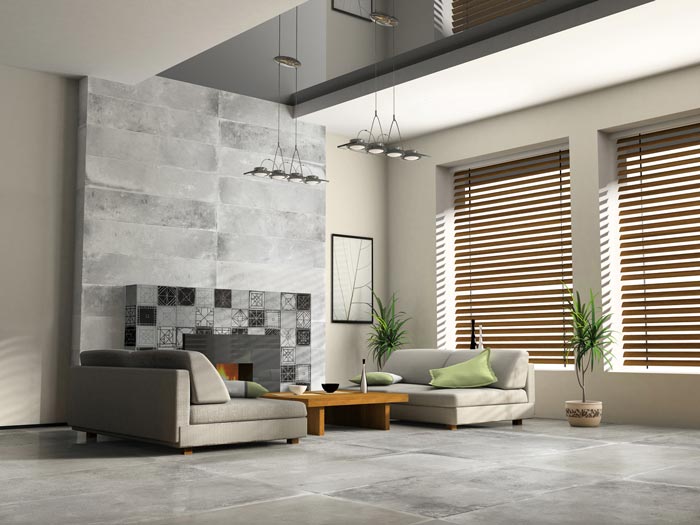
blog, floors, how to articles, walls
When it comes to home renovation, creating the illusion of more space is a common goal. One effective way to achieve this is through smart tiling choices. With the right techniques and design choices, you can make a room look bigger with tile.
In this blog, we’ll explore some smart tiling options that can impact your spatial perception and give your room a larger appearance.
Use Light-Coloured Tiles
Using light-coloured tiles can create the illusion of more space. Light colours reflect more light and make the room appear brighter and more open. Choose tiles in shades of white, cream, beige, or light grey for a more spacious feel.
Lay Tiles Diagonally
Diagonal tile patterns create an optical illusion that makes the room look wider. When tiles are laid on a diagonal angle, it creates a visual flow that draws the eye towards the corners of the room, making the space feel more expansive.
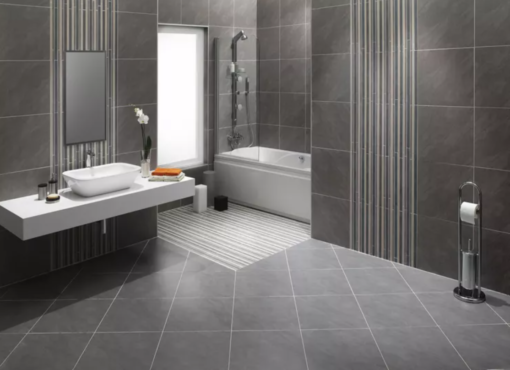
Above: image credit – The Spruce
Choose Large Format Tiles
Large format tiles are another great option for making a room look bigger. Larger tiles have fewer grout lines, which can break up the visual flow and make a room feel more cluttered. Additionally, large format tiles create a seamless look that can give the illusion of more space.
Install Tiles Vertically
Installing tiles vertically can make a room feel taller, which in turn makes the space feel larger. Vertical tiles draw the eye upwards and create a sense of height. This is particularly effective in rooms with low ceilings.
Use Glossy Tiles
Glossy tiles reflect light and create a mirror-like effect, which can make a room appear larger. This effect is particularly effective in small bathrooms or kitchens, where the reflective surface can bounce light around the space and make it feel brighter and more open.
Choose a Grout Colour That Matches the Tile
When selecting a grout colour, choose a shade that matches the colour of the tile. This creates a seamless look that can make a room feel more spacious. Using a contrasting grout colour can break up the visual flow and make a room feel smaller.
Consider Textured Tiles
Textured tiles can add depth and dimension to a space. They can also create the illusion of more space by drawing the eye towards the textured surface. Textured tiles are particularly effective in small rooms or areas that lack natural light.
In conclusion, smart tiling choices can have a significant impact on the perception of space in a room.
By using light-coloured tiles, laying tiles diagonally, choosing large format tiles, installing tiles vertically, using glossy tiles, choosing a grout colour that matches the tile, and considering textured tiles, you can make a room look bigger with tile. With these techniques, you can create a space that feels open, bright, and spacious.
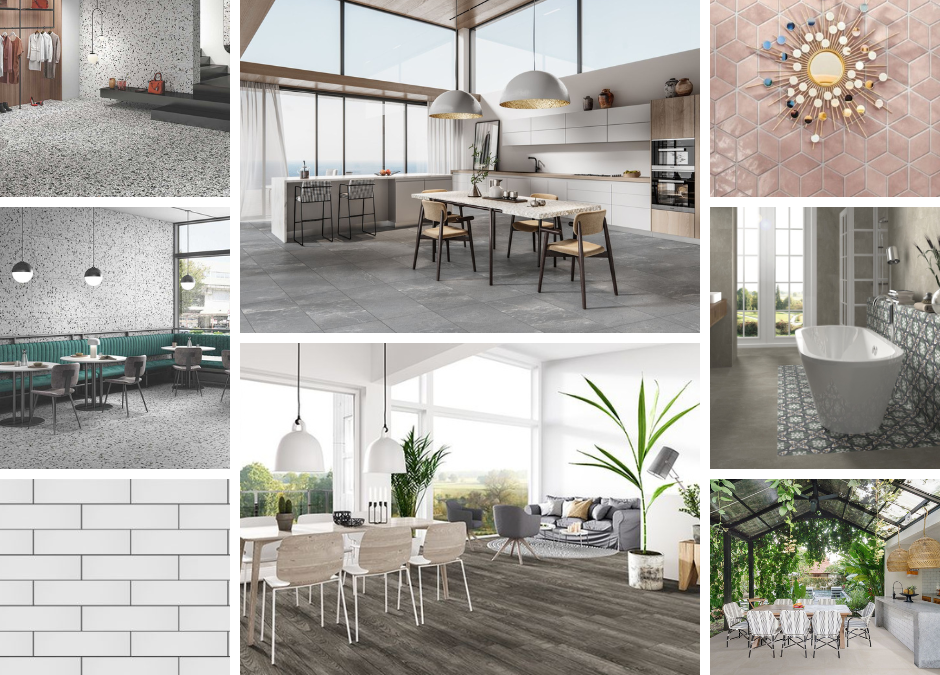
blog, floors, walls
As we enter a new year, the world of design is abuzz with excitement over the latest trends and styles. And when it comes to home decor, one of the most exciting aspects is the ever-evolving world of tile design. From classic ceramic to modern mosaic, tiles offer endless possibilities for adding texture, colour, and personality to your home.
So what can we expect in 2023? Here’s a look at the big names in design forecasting and their predictions for the year ahead.
One of the major players in design forecasting is Pantone, the authority on colour trends.
For 2023, they predict a trend towards earthy, nature-inspired hues such as olive greens, warm browns, and deep blues. These colours create a sense of calm and serenity, and can help to bring the outdoors inside. In terms of tile design, we can expect to see a lot of earthy tones and organic textures, including natural stone and wood-look tiles. These tiles will add a warm, inviting feel to any space and are perfect for creating a cozy, welcoming atmosphere.
Next, we have Houzz, the popular home design website.
They predict that geometric tiles will be a big trend in 2023. These tiles feature bold shapes and patterns, often in contrasting colours. They can be used to create eye-catching feature walls or to add interest to a backsplash or shower enclosure.
Another trend they anticipate is the use of large-format tiles, which can create a sleek, modern look in any space.
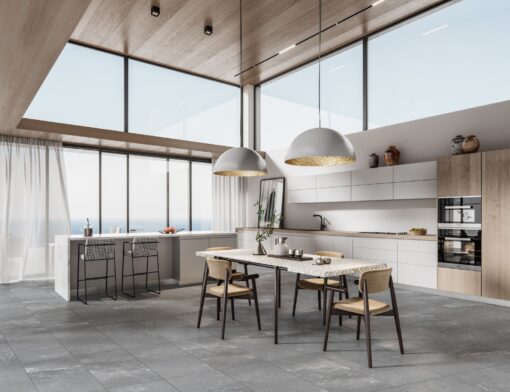
Interior designer Emily Henderson is also weighing in on the tile trends for 2023.
She predicts that terrazzo tiles will be a major player in the coming year. These tiles feature a mix of chips or fragments of marble, quartz, granite, glass, and other materials, which are then poured into a cement or epoxy base. The result is a unique, speckled appearance that’s perfect for adding texture and interest to floors, walls, and countertops.
Finally, we have the design team at Elle Decor.
They’re predicting a return to classic materials and styles in 2023, including subway tiles and hexagonal tiles. These timeless designs never go out of style and can add a touch of elegance to any space. They’re also anticipating a rise in artisanal and handcrafted tiles, which offer a unique, one-of-a-kind look that can’t be replicated by mass-produced products.
Whether you’re a DIY homeowner or an interior designer, these tile trends for 2023 offer plenty of inspiration for your next project. From soft pastels to bold geometric patterns, there’s something for every style and taste.
So, go ahead and start planning your tile makeover today – the possibilities are endless!
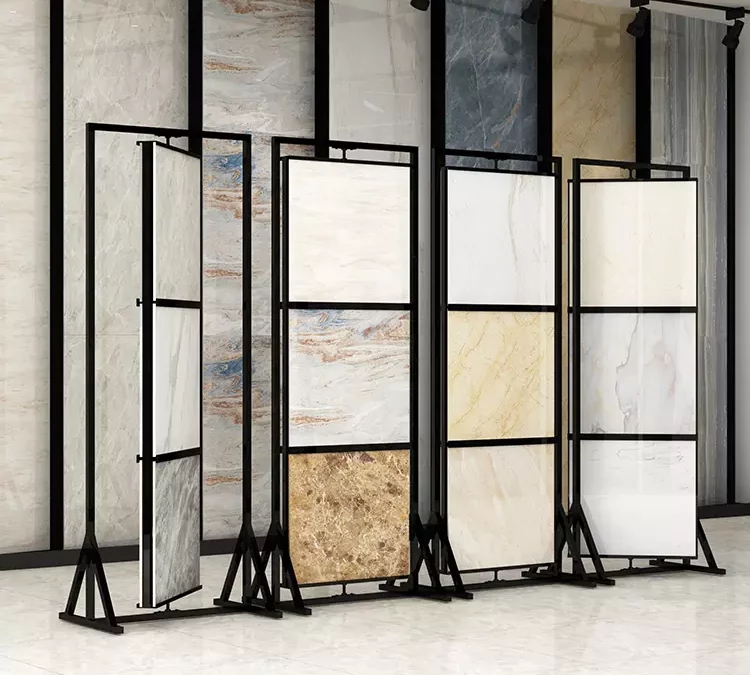
blog, floors, how to articles, walls
With all the options that are available, we know that deciding which tiles to choose for your project is an overwhelming task. We’ve put together a guide of top tips to help make the decision easier for you.
1. First things first, consider the overall look you want to achieve. Gather those inspo pictures and create a mood board to get a better understanding of what tiles you need to look for. This will also assist the sale team when you visit our showroom so that they can show you options for the exact style of tiles you are looking for. You can create a whole new style for your space or work with the existing style of your home.
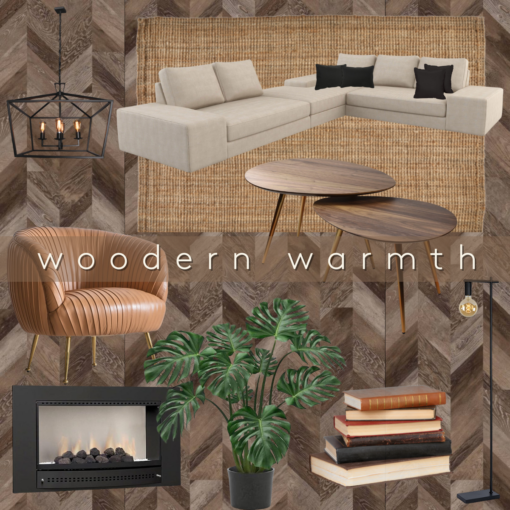
Above Image: Woodern Warmth Moodboard featuring gerflor creation 55 chevron moka vinyl planks
2. Next it is important to consider the function of the room where you wish to lay your new tiles. This will ensure you choose the correct tiles that won’t need to be replaced in the near future. For example, if you are renovating your kitchen or bathroom, it is important to choose tiles that are slip-resistant, durable, and able to withstand moisture and water.
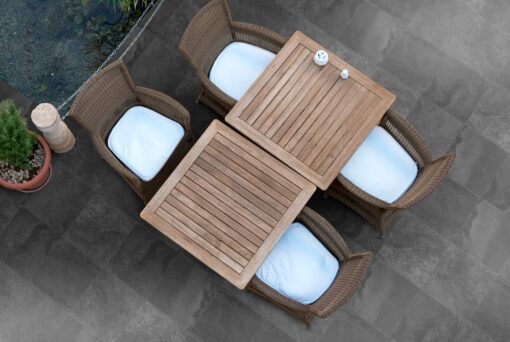
Above Image: Mabula charcoal slip-resistant ecotech tile
3. The size of the room matters. Larger tiles can assist in making a small room feel larger, with fewer grout lines. Lighter tiles can also assist in adding a larger feel to a small space. This does not mean that you can’t use smaller tiles in small spaces. Certain tiles can make a small space flow better. Mosaic tiles are a good option. There will be more grout lines but because these tiles are easier to install around fixtures and corners, it creates a smooth flow. They also require fewer cuts when installing, which creates a more streamlined overall look.
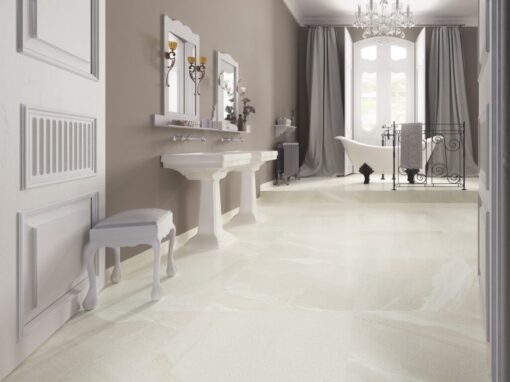
Above Image: Thames white porcelain larger format tiles
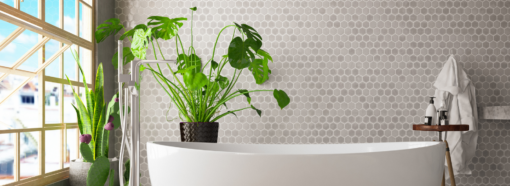
Above Image: Hexagon rome bianco statuario mosaic wall tiles
4. The size of the area you wish to tile will directly impact the amount of money you need to spend, which leads us to our next point – Budget. Firstly, the larger the area, the more tiles you will need to purchase, and the higher your cost will be. The larger the number of tiles, the more grout you will need, and the higher your labor costs will be. It is easy to calculate how many tiles you will need to purchase to get a better understanding of how much money you will spend. If you are unsure how to do that, have a look at our previous blog where we give you a step-by-step guide of how to do these calculations yourself – Lesson/Tip: How to calculate how many tiles you need. Knowing your budget will also make it easier for you to decide which tiles to choose, as it will filter down the options of tiles that fall within your price range.
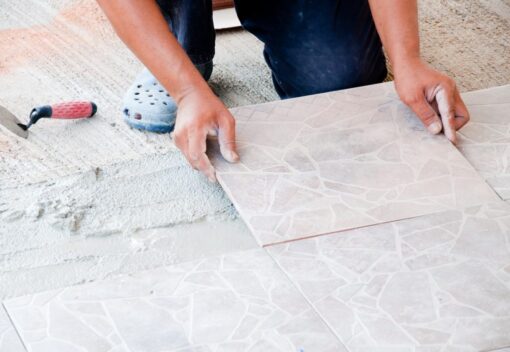
Pro Tip: Choosing the right grout colour is also important when choosing the right tiles. The colour of the grout you use will directly affect the overall design and look of your space. Have a look at our blog to ensure you make the right decision when it comes to grout – Lesson/Tip: How to choose the right grout colour.
If you are still unsure which tiles to choose for your latest project, visit one of our showrooms and talk to the experts, who will help make your decision easier than ever.
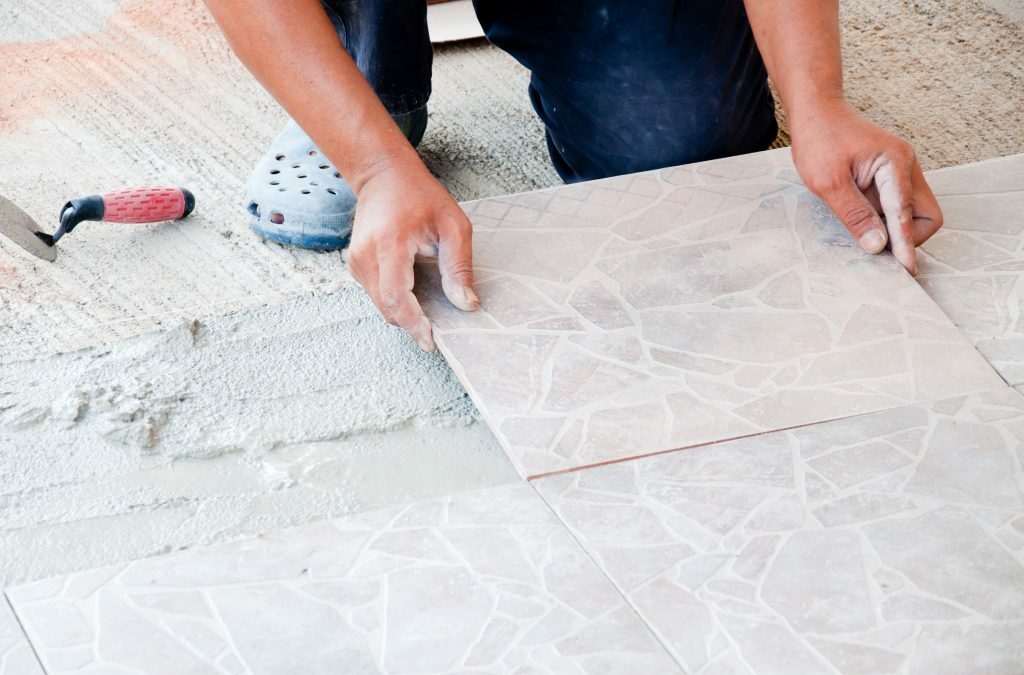
blog, commercial blog, floors, how to articles, walls
A regular question we get in Tiletoria showrooms is how to calculate how much tile you will need for your project. Whether you’re wanting to install your own tiled floor or you want to calculate the materials that you will need to budget for, it is important to know how to work out how much tile you need. The steps are the same regardless of whether you are doing a wall project or a floor.
With a measuring tape and some simple maths, you can estimate how much tile you need and how much the project is going to cost you.
What You’ll need:
- Paper
- A pen/pencil
- Measuring tape
- A calculator

Step 1: Measure the length of one side of the room.
The first step is to measure the floor length and width of the room you want to tile. Measure the length and height of the wall, if it is a wall project.
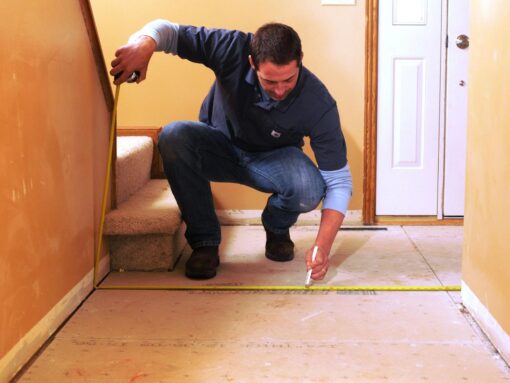
Step 2: Multiply the two measurements.
Once you have both measurements, the next step is to multiply them. Multiplying the length by the width provides you with the square meterage of the project area. For example, if the floor measurements of the room is 15 meters wide by 17 meters long, multiply 15 by 17. The square meter area of this room is 255 square meters in total.
Step 3: Based on this, determine the amount of tiles you’ll need.
Next is to use the above calculations to determine the amount of tiles needed. When buying tiles, they usually come in boxes, and you have to buy the whole box. Divide the total square meters of the room by the total square meters of the tile in the box to determine how many boxes of tiles you will need to buy. Lets say for our example, each box contains 15 square meters of tile. So, if you need 255 square meters, 15 goes into 255, 17 times, (255 ÷ 15) so you’ll need to buy at least 17 boxes.
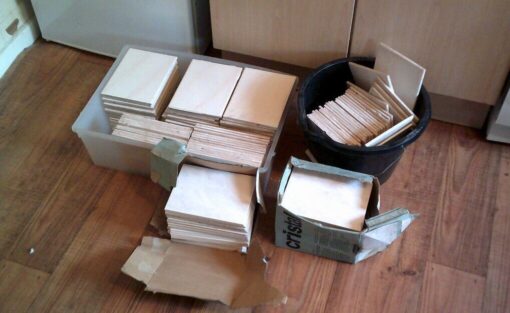
Pro Tip:
This is where the saying “rather be safe than sorry” comes into play. You should never buy just the amount of tile you need because you will always need extra tiles for any cuts, waste, breaks, and mistakes. To be on the safe side, you will need to multiply the square footage of the room by 10%, then add this amount to the total square area of the room. This is the total amount of square meterage of tiles you should buy. To continue with the above examples: 10 x 255 = 25.5, and 255 + 25.5 = 280.5, round up to 281. We’ll need 281 square meters of tile.
Another important reason to buy extra tiles is that often the style or colour of a particular tile gets discontinued after some time, and in the event that you need to replace a broken tile or two, you will need extras on hand to make the repairs. If you don’t, then to fix it, you will have to replace the entire floor.
In other words: Rather spend a little bit more up front to save money in the long run.
Important factors to consider:
Gap Size: Floor or wall tiles are typically installed with gaps between the tiles, which are commonly filled with grout. The average tile may look quite similar to the next tile however, they are often not uniform in shape and size, and would not fit properly if installed without any gaps. These gaps can range from anywhere between one-sixteenth of an inch to half an inch in size. Different sized tiles, materials, and design needs all affect the size of the gaps.
Size: Tile size can range anywhere from smaller mosaics, slab tiles and everything in between. Square sizes are the most popular, accessible, and easiest to install. While straight edge tiles are the most common, there are also unique tile shapes, but the installation of these is not as simple. Large tile sizes can make smaller rooms appear bigger, as well as more open and clean because there are fewer grout lines. However, installing larger tiles may results in more wastage, while installing smaller tiles can add texture to a room.
Material: There are a number of different types of tiles, including ceramic, porcelain, glass, quarry, stone and much more. Ceramic and porcelain tiles are the most popular, cost efficient, and come in a variety of different styles. Glass tiles, are not appropriate for flooring because they crack under pressure, are visually unique and interesting. These are most commonly used for kitchen and bathroom backsplashes. Quarry tiles have rough surfaces that are good for floors that require added grip, such as outdoors and in restaurant kitchens. Stone tiles include marble and granite, which provide unique and natural stone patterns, textures, and colours that are difficult to achieve using ceramics. They also offer the illusion of blending into grout edges, giving off an overall uniform look.
Other frequently asked questions we get regarding how much tile you need:
Question: What if the wall isn’t a simple rectangle and the room isn’t square?
Answer: If the space you want to tile is an unusual shape, draw a picture of the floor plan on a piece of paper, then separate the room into squares or rectangles. Measure each squared-off section separately, convert inches to feet (divide by 12; you’ll probably end up with a decimal), multiply the length and width of each space, then add all these numbers together to find the total square footage.
Question: What if I want to lay the tiles diagonally?
Answer: For tiles laid at a 45 degree angle, the overage or waste factor will be greater, so buy extra.
Question: How many square feet of tile comes in a box?
Answer: Most boxes hold 10 square feet, but check your box to make sure.
Question: Does the size or shape of the tile matter in my calculation?
Answer: No, only the square footage matters.
If you are still uncertain about the calculations, then pop by one of Tiletoria’s showrooms and chat to their sales team for advice.
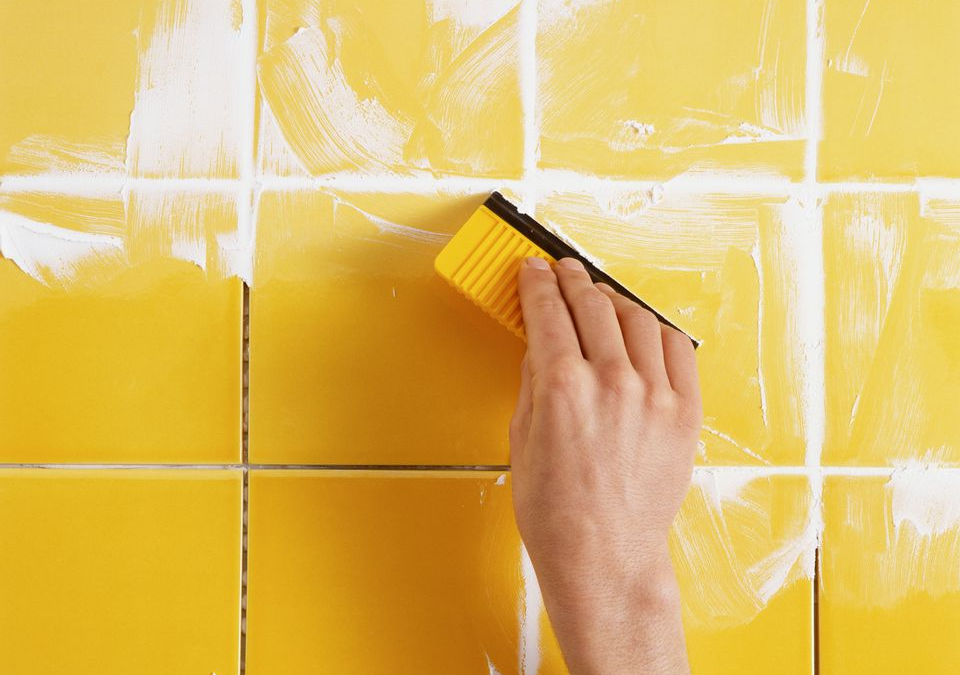
blog, commercial blog, floors, how to articles, walls
The tile grout colour you choose to use on your wall or floor plays an important part in the overall room design. You can choose between colours which are complementing or contrasting with your tiles. Alternatively, if you really want to create a unique space, you can go with a bold option and use non-standard grout colours.
Tile grouts come in a variety of colours from light to dark. Standard grout colours include; pure white, white, grey, black or beige, in a variety of different shades.

Contrasting Grout Colour
This grout is either darker or lighter than the corresponding tile. This will in effect frame each tile. The grout lines will become a feature of the overall tile design. Using small tiles with a darker grout can sometimes appear busy if used over a large area.
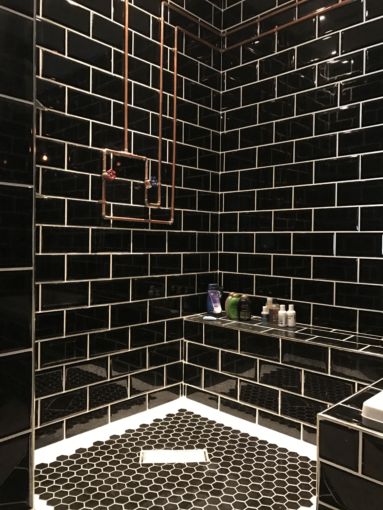

Complementary Grout Colour
This grout will be similar in colour to the tile. This will cause the tiles and grout lines to blend together. Effectively, blurring grout lines so that you see a consistency with the same colour throughout the room. This can be useful over small areas to keep the space less busy.
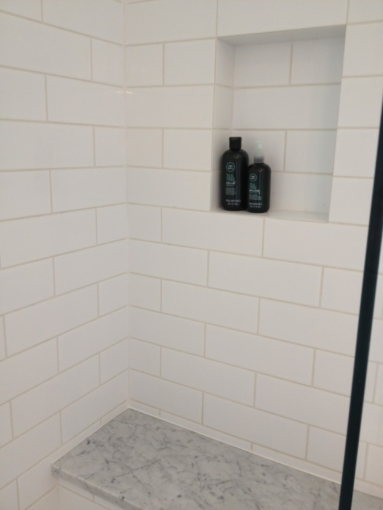
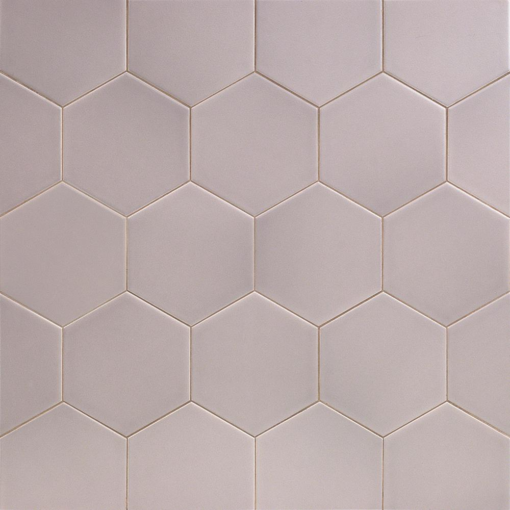
Colourful Grout
We commonly see tiles with white, gray, or black grout, but choosing colourful grout is a great way to make your tiles stand out. Tiles with coloured grout draws attention to the tile layout pattern, and creates a unique looking space, as opposed to a more seamless design.

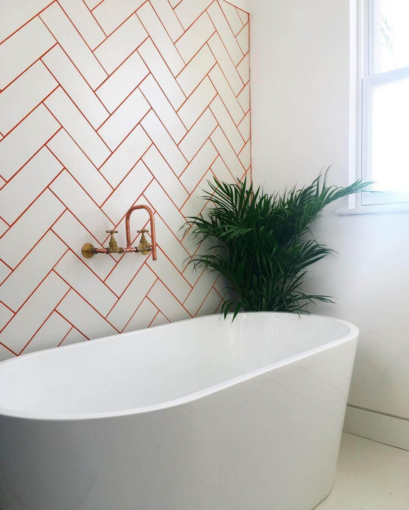
Pro Tip:
Avoid using pure white grout. Over time, using a pure white grout will start to show discolouration and mould quicker than darker shades of grout, especially in areas with high moisture and water. We recommend using an off white or grey grout as an alternative to avoid this from happening and for easier maintenance. We also recommend using a tile grout protector if you are using a light grout colour. It takes a bit more work afterwards protecting the grout, but the results are worth it. It is recommended to re-apply a grout protector every 2 years to prevent discolouration.
Should you need further help or assistance, pop into a Tiletoria showroom near you.








